This trip was never intended as a touring vacation – we’d hoped to combine a beach holiday with a little bit of sight seeing. As happens, weather dictated our itinerary – a mixture of sunny days and overcast wet weather meant we toured around more than originally planned.
It’s only when we started driving about that the scale of the country was put in perspective – there’s plenty of mileage to be put up in the region and yet its such a small percentage of the land area of Italy. We didn’t see everything – there’s definitely another trip in it – and we will go back. With the diversity of landscapes – olive groves and farms, coastline and hilltop towns – you just have to throw in the food and vino to have all the ingredients for a fantastic holiday destination.
In late June, the region catered primarily for Italian tourists and some bus tours. Not yet peak season, it was a great time to travel about – there was always parking available and restaurants had a buzz but weren’t crowded. If just planning on moving around and seeing the highlights, you’ll cover a lot in a few days. But you could also spend a week or two here if you’re looking for beaches, cycling or hiking.
First Things First
- We flew into Bari with Ryanair. Its a small airport and car rental is easily managed.
- It is possible to manage in the area without a car but it would be very restrictive. There is a rail network between the major towns and also a bus service.
- Our Itinerary:
Matera – 2 nights (not actually in Puglia as we found out upon arrival but in neighbouring Basilicata) Read about our stay in Matera :
Ostuni – 4 nights
Otranto – 5 nights
So here’s what you can look forward to in Puglia:
Olive Groves
Puglia produces more than 40% of Italy’s olive oil. It’s estimated that there are about 66 MILLION olive trees in the region! Many of these trees are centuries old with gnarled twisted trunks and despite no longer producing olives, they are protected by law and therefore cannot be removed from the land.
Any drive tin the countryside brings you through groves with neat rows of trees divided by dry stone walls. As with wine, there is a huge range of flavours and qualities. If you are interested in the product, there are plenty of shops, farms, museums and tours in the region and you can even ‘adopt’ one of the ancient trees! (If you are travelling with just hand luggage and want to bring some home, there is a shop in the airport selling local produce, including oil)

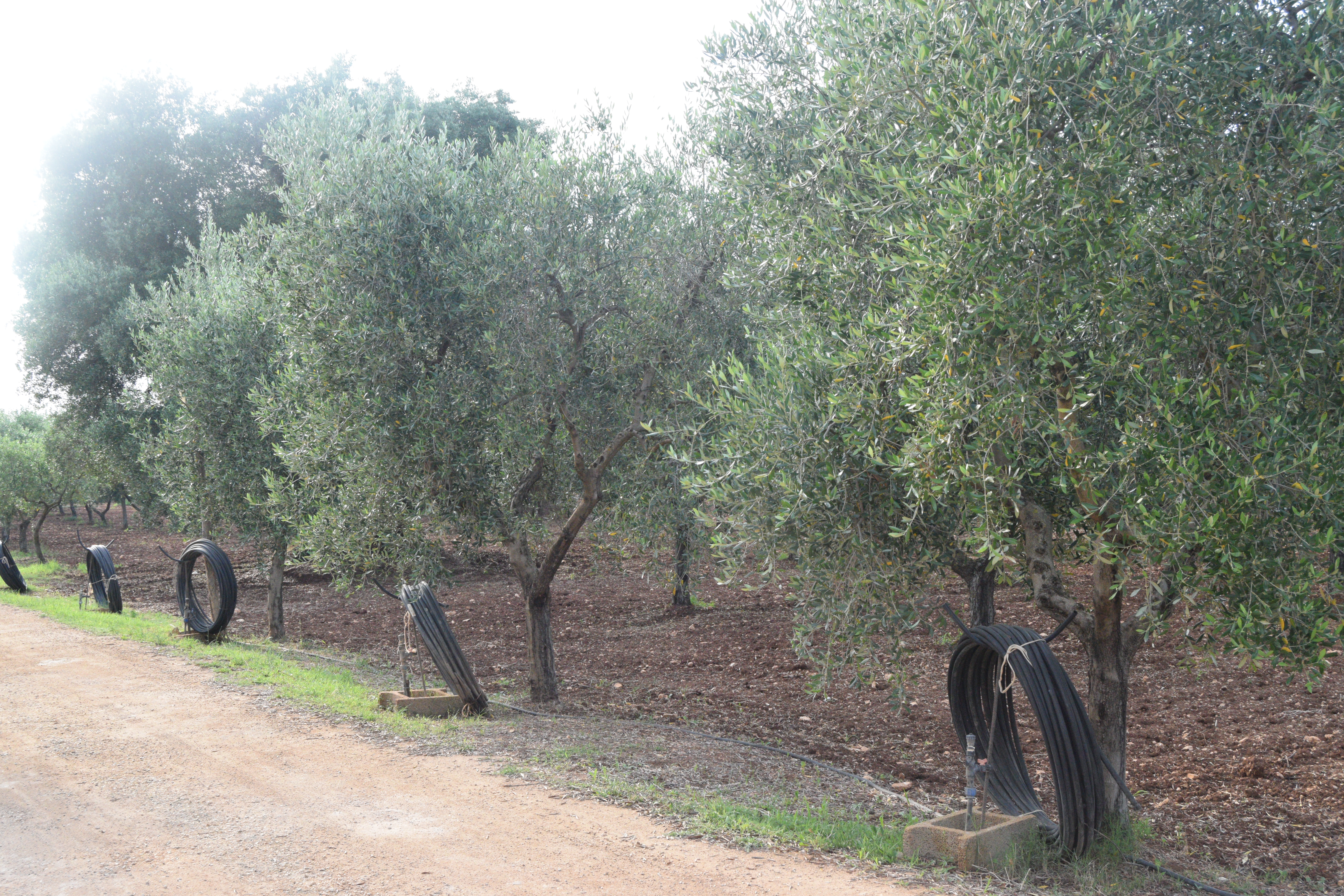
Trulli Houses
Trulli Houses are dry stone huts with conical roofs originally constructed as field shelters using the local materials at hand. There was one room under each conical roof and clusters were built together to house a family. (As no mortar was used, there is a theory that they could be dismantled in a hurry thus evading tax inspectors!).

The town of Alberobello, home to over 1000 whitewashed trulli, is one of the main attractions of the region and an absolute must in any tour bus itinerary.
I have to admit that I really disliked Alberobello. The network of tiny streets and beautifully preserved houses is overrun with visitors and screams ‘tourist trap’ with its shops, cafes and bars.
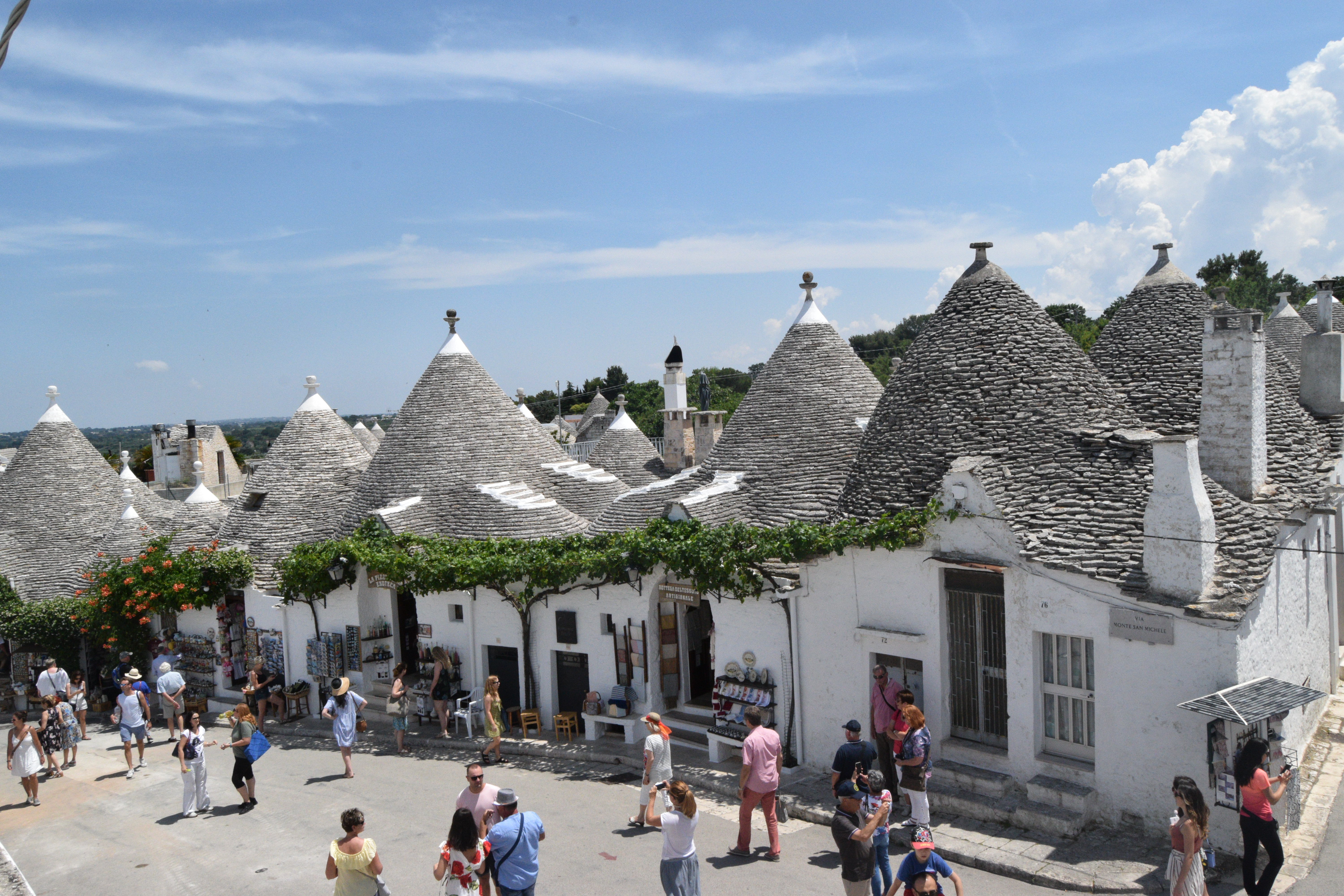
Off the beaten track, on the opposite side of the main street, there is another cluster of trulli houses. Many of these are family homes and the area is less commercialised and manicured. A few of them are open to the public – I presume you leave a donation if you go inside.
 (A typical residence in Rione Aia Piccola – the quieter side of town.. I like the garage!)
(A typical residence in Rione Aia Piccola – the quieter side of town.. I like the garage!)
Driving about this part of Puglia presents plenty of opportunity to spot the older trulli along the side of the road or on farmland…. a far more satisfying experience.
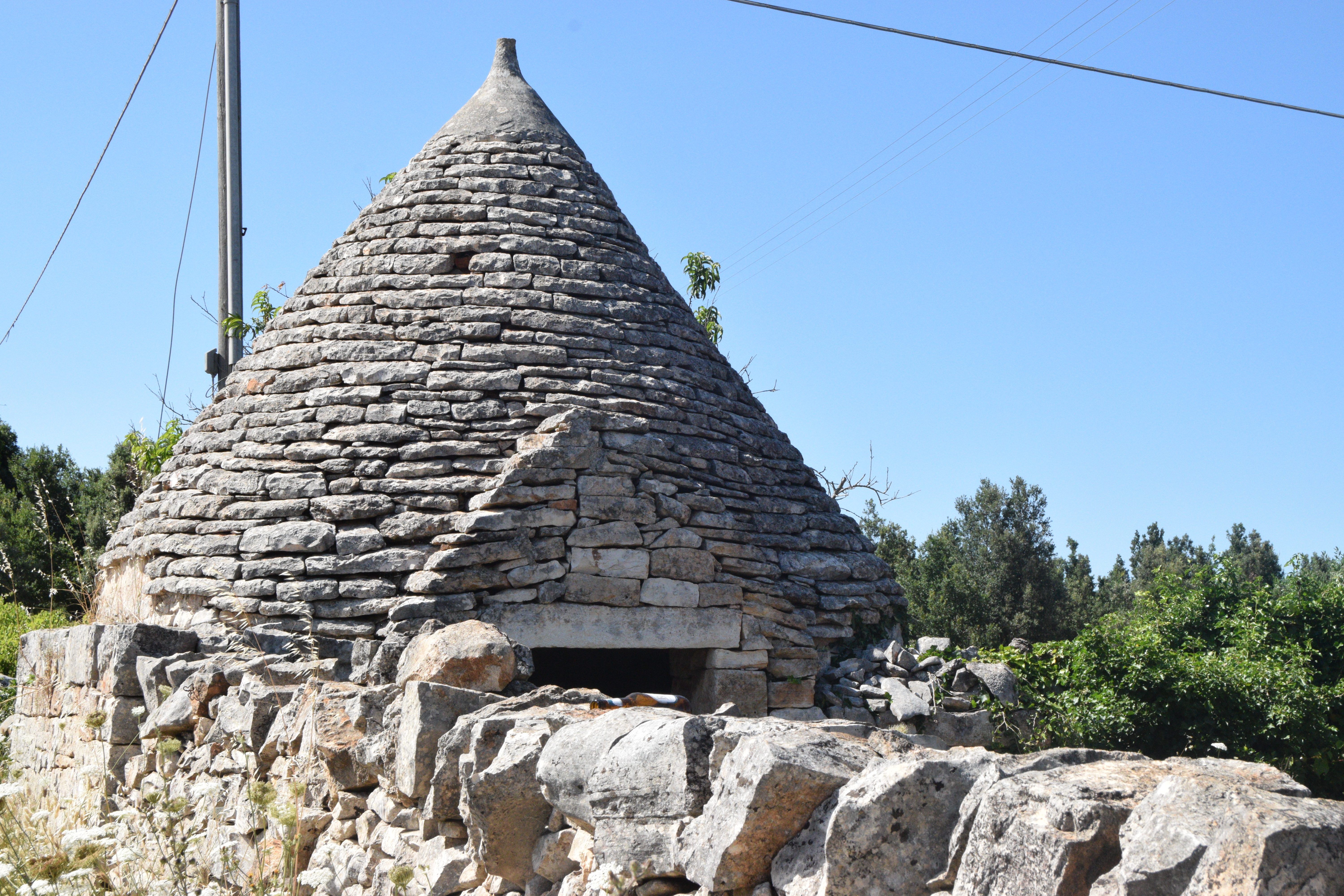
Beaches
Beaches vary between rock and sand and of course get very very crowded in high season. At the end of June, there was plenty of parking space and no great demand for lido beds and umbrellas – there was enough public space for everyone to spread out their belongings.

 (Otranto -before the summer rush!)
(Otranto -before the summer rush!)
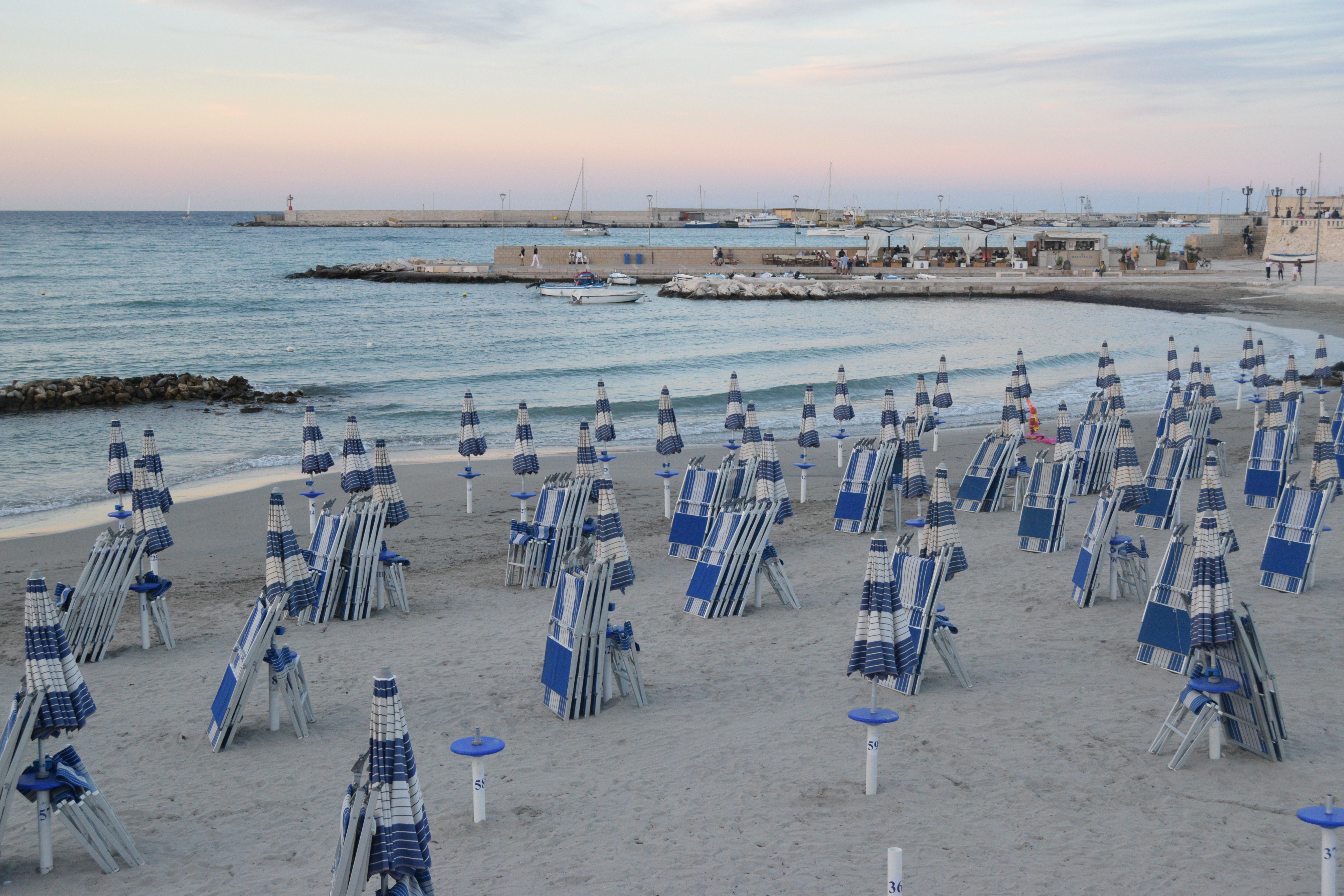
 (Clear water – and very warm!)
(Clear water – and very warm!)
Mosaics
Its not the first thing you’ll think about when considering Puglia but try and get to Otranto Cathedral to see the floor mosaic. Spreading over a surface of about 800 square metres, figures from the Bible, mythology, history and literature cover the entire floor. A tree of life stretches through the nave, resting on two Indian elephants. Its spectacular and probably my favourite thing from the trip.

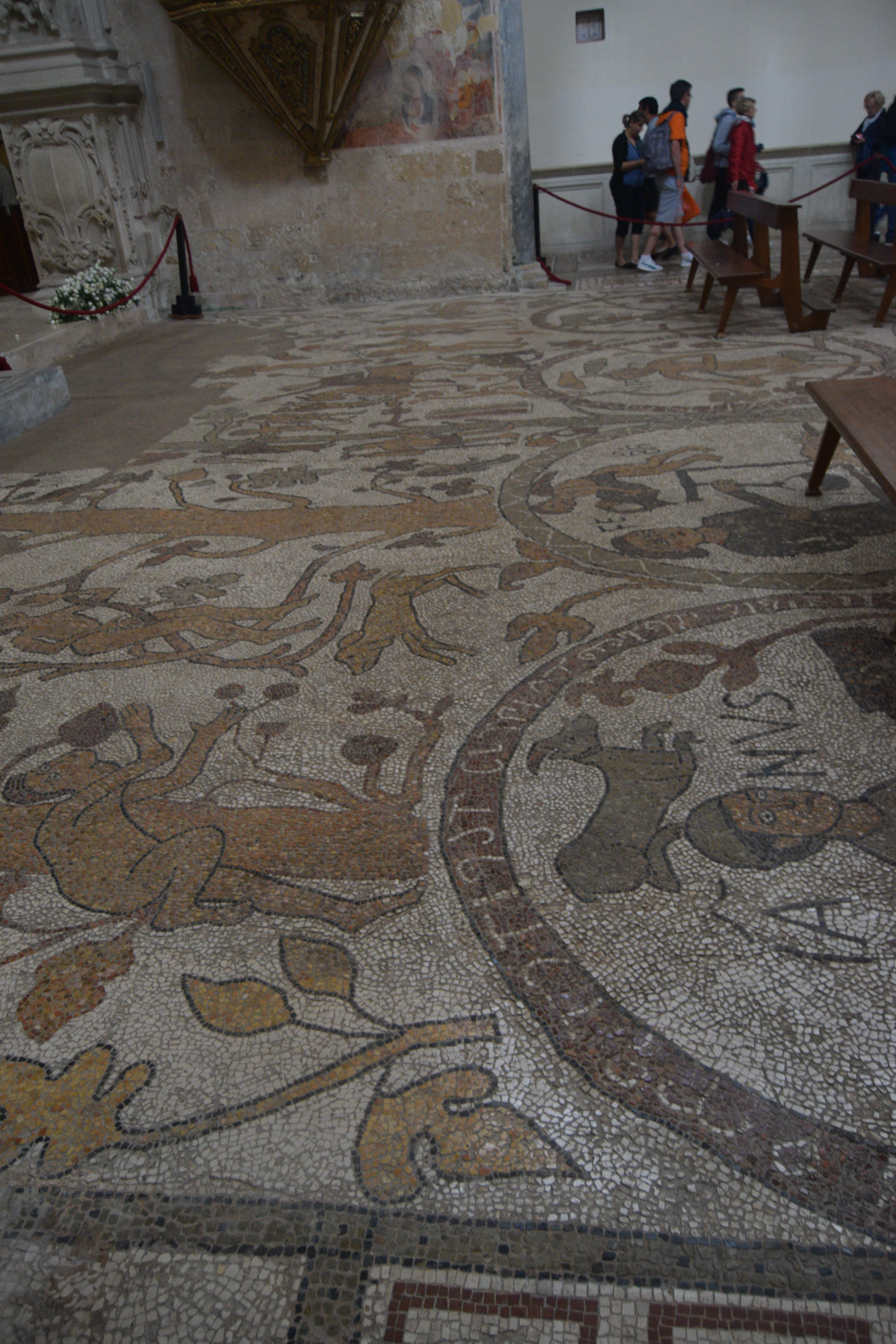
Scenic Coastal Drives
With over 800km of coastline, there’s plenty of driving to be done if that’s your thing. The rocky Adriatic coast from Otranto south to the tip at Santa Maria di Leuca is particularly scenic while the Ionian side has Gallipoli with its port and beaches.
We covered this route comfortably in one day – Leaving Otranto in the morning we visited Lecce first and went on to Gallipoli for lunch before driving south to Santa Maria di Leuca and back to Otranto via Castro.
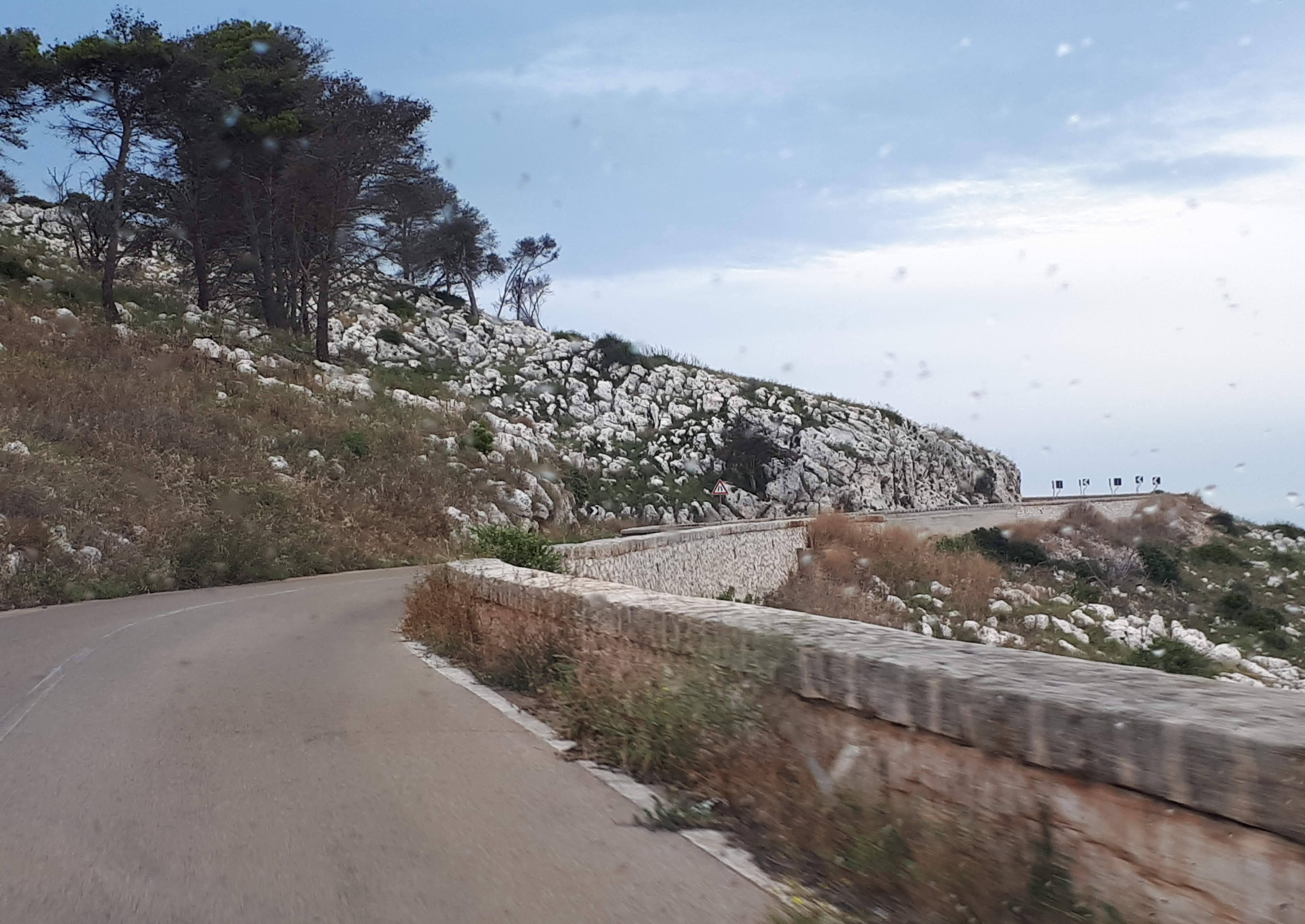 (The winding road south of Otranto)
(The winding road south of Otranto)
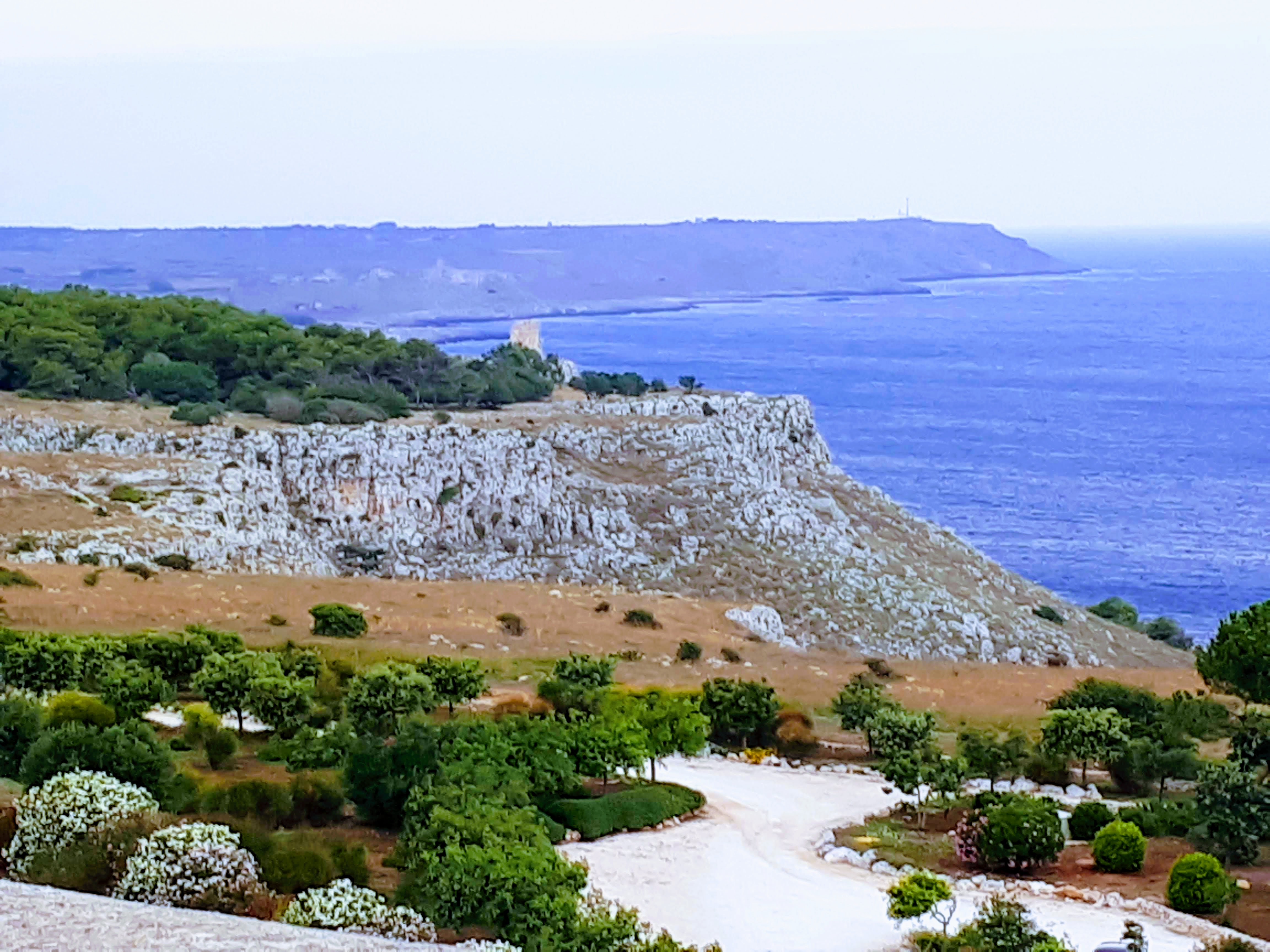
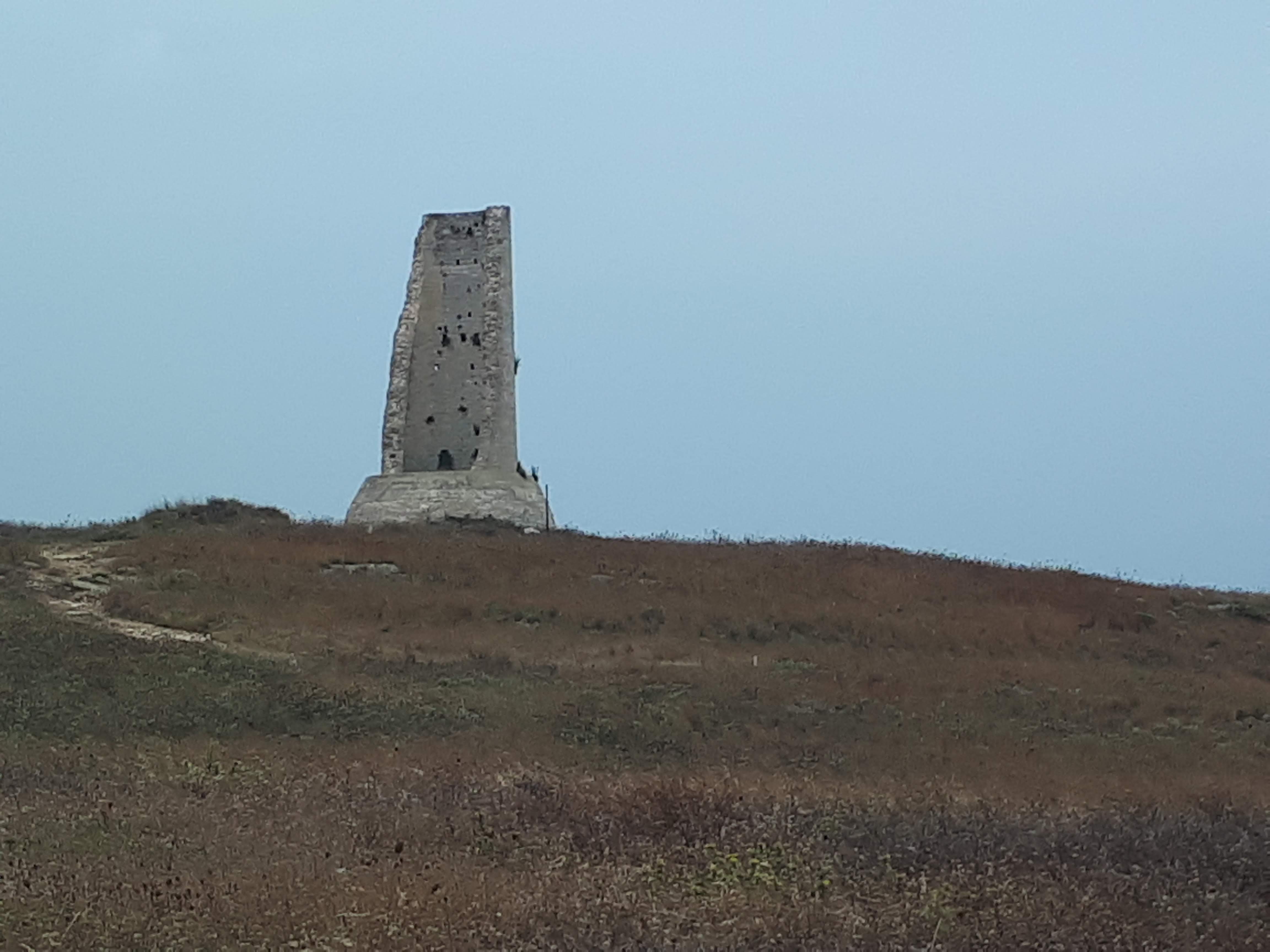 (The coastline is dotted with watch towers like the Serpent’s Tower at Otranto. According to legend, a serpent climbed up this tower each night and drank the lantern oil. Sailors would crash into the rocks below and survivors were eaten by the snake!)
(The coastline is dotted with watch towers like the Serpent’s Tower at Otranto. According to legend, a serpent climbed up this tower each night and drank the lantern oil. Sailors would crash into the rocks below and survivors were eaten by the snake!)
 (Tip of the Stiletto -Santa Maria di Leuca – where the Adriatic meets the Ionian)
(Tip of the Stiletto -Santa Maria di Leuca – where the Adriatic meets the Ionian)
White Hilltop Towns in Valle d’Itria
You get used to the fact that the beautiful little towns and villages scattered throughout the countryside are not frozen in time just for visitors to wander through and enjoy, but are actually living communities and, more often than not, surrounded on most sides by modern living and shopping districts. This probably means that the attractive town standing on the distant hill has a disappointing approach but all is forgiven when you park and get out into the narrow streets and alleyways of the old centre.
While all are individual in their appeal, there are similarities in their structure – white houses built on the higher ground of the area, a maze of lanes and paths, and often few actual ‘attractions’ other than the church and piazza. Some of them have public gardens which offer views over the surrounding terrain. And they are all gorgeous!
Ostuni
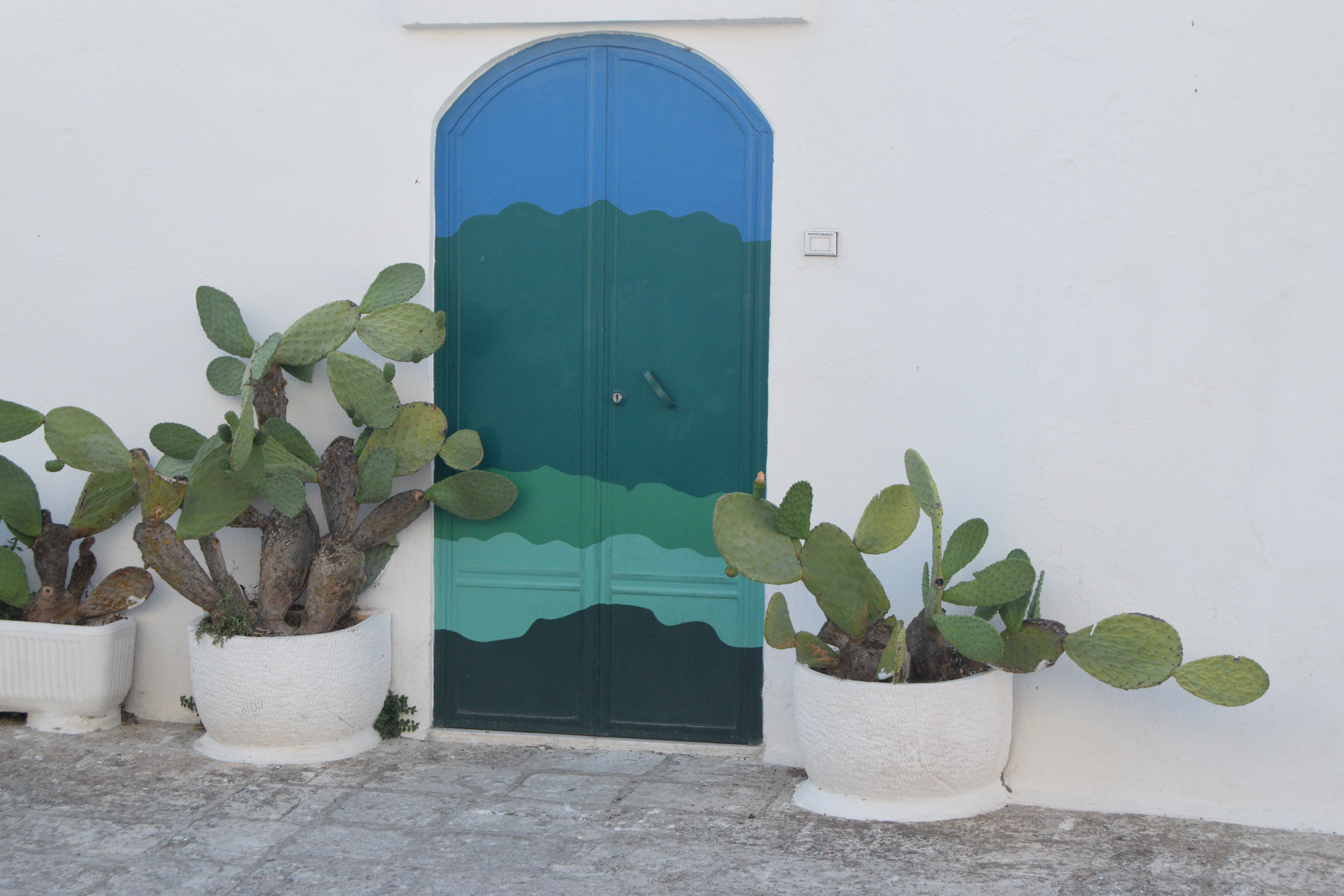 (Probably the most photographed door in Puglia!!)
(Probably the most photographed door in Puglia!!)
Cisternino


Locorotondo
Martina Franca
History: Fortifications and Excavations
With a constant threat of invasion over the centuries, the region was well fortified with towers, imposing castles and town wall defences. If you are interested in something even more ancient, then the amphitheatre in Lecce should impress – it was only discovered in the early 1900’s by workers constructing a bank and excavated in the 1930’s. It is still only partially visible as it is covered by buildings with historical value in themselves.
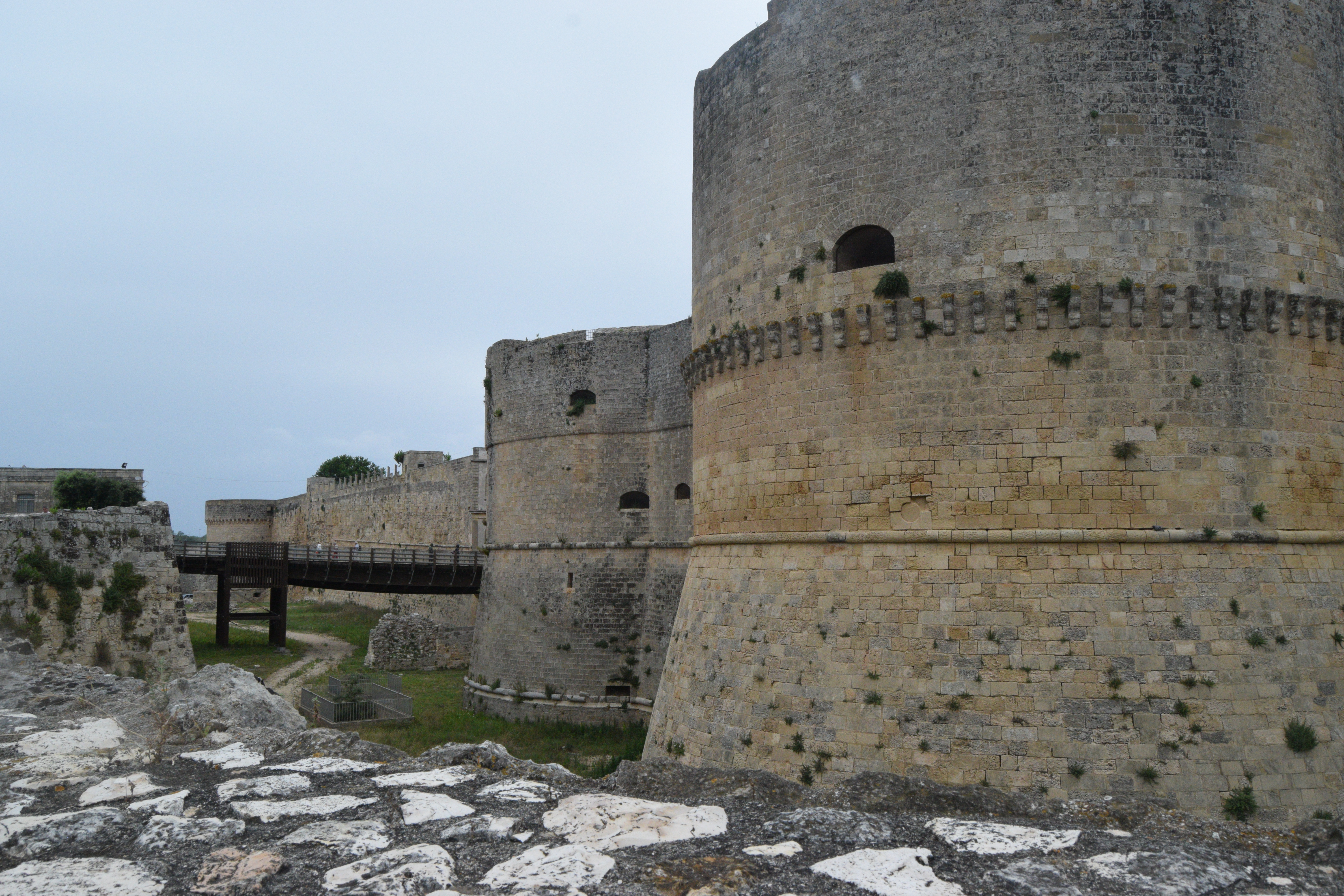 (Otranto)
(Otranto)
(Otranto)
 (Gallipoli)
(Gallipoli)
 (Roman amphitheatre in Lecce)
(Roman amphitheatre in Lecce)
Cathedrals, Churches and Basilicas
Well if this is your thing then you’ve come to the right place – Lecce alone has over 40!! You can glut on the lavish interiors, frescoed crypts, rose windows, and every style you can think of -Baroque, Byzantine, Renaissance, Moorish, Romanesque, Gothic…
Most churches are free to enter and allow photography (no flash of course)
(Frescoes, Otranto)
 (Rose Window, Ostuni)
(Rose Window, Ostuni)
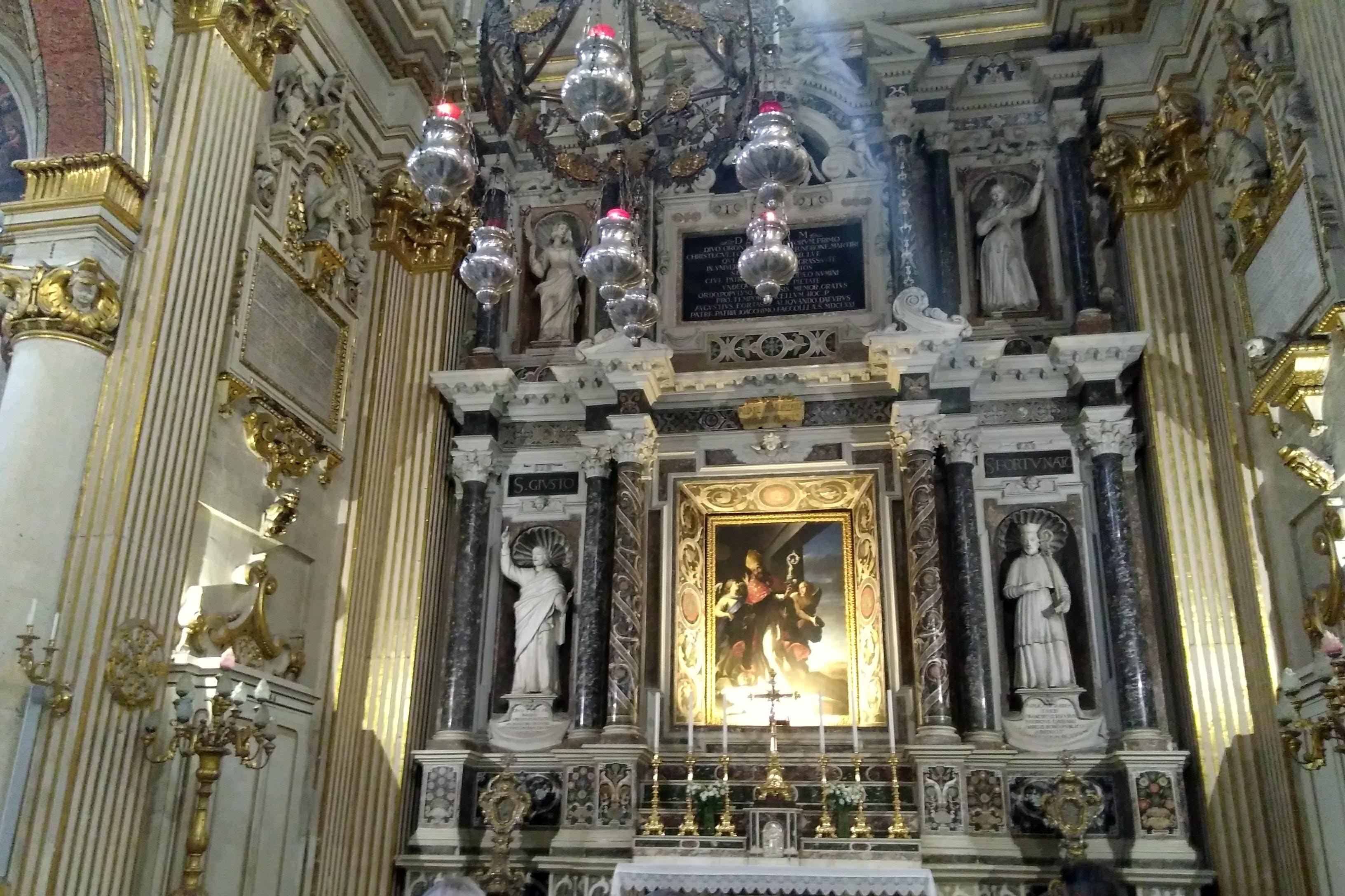 (Interior, Lecce Cathedral)
(Interior, Lecce Cathedral)
(Lecce Cathedral)
 (Some of the remains of approximately 800 martyrs of in Otranto Cathedral)
(Some of the remains of approximately 800 martyrs of in Otranto Cathedral)
Masseria Hotels
A Masseria is a working farm, usually producing olive oil or wine and is found exclusively in this part of Italy. Many of them double as hotels and restaurants, using their own produce in their kitchens.
Masseria Valente – Ostuni
This masseria is set in olive groves midway between the town of Ostuni and the beach – about 6 /7 kms from both. Its a lovely area for cycling and and there is also a large pool terrace in the garden. We didn’t have dinner here but breakfast was great!
The Positives: Beautiful setting / only 12 rooms / our room had catering facilities which meant we could stock up on bits for lunches and also could brew up a coffee any time we wished / plenty of free parking / great pool area / very good breakfast
The Niggly Bits: The only thing I can think of is location. You’d definitely need a car for this one. If you like wandering into town in the evenings from your accommodation then this is not for you. Otherwise, its perfect!



Masseria Bandino – Otranto
Situated just a few kilometres out of town, this is a very popular masseria as its restaurant is listed in Tripadvisor as number 1 in Otranto. It has a swimming pool and offers a 4 course table d’hote menu for €28. Again breakfast is very good and we enjoyed an excellent dinner on one evening.
The Positives: Located close enough to town to walk in the evenings (might need taxi home) / good restaurant on site / good pool area / free parking / good base for southern Puglia, beaches, etc.
The Niggly Bits: Table d’hote menu only available until 8.15 pm / Our room didn’t have catering facilities and apparently our room rate didn’t qualify us for a kettle (but coffee ordered at reception costs just €1 per cup so it didn’t break the bank!)

Food and Drink
Allowing for the fact that we ignored our own advice as usual and ate on occasion in tourist hot spots, we did not have even one bad dining experience on the trip. We generally found good value in restaurants, (our most expensive meal being the 4 course table d’hote in the masseria for €28 pp) and the house wines were more than adequate!
There’s plenty of seafood of course if that’s your preference but lots of other options available and all very good. With the olives, breads, pastas, pizzas, wines and desserts, you might need to forget about calorie counting while you’re here!!
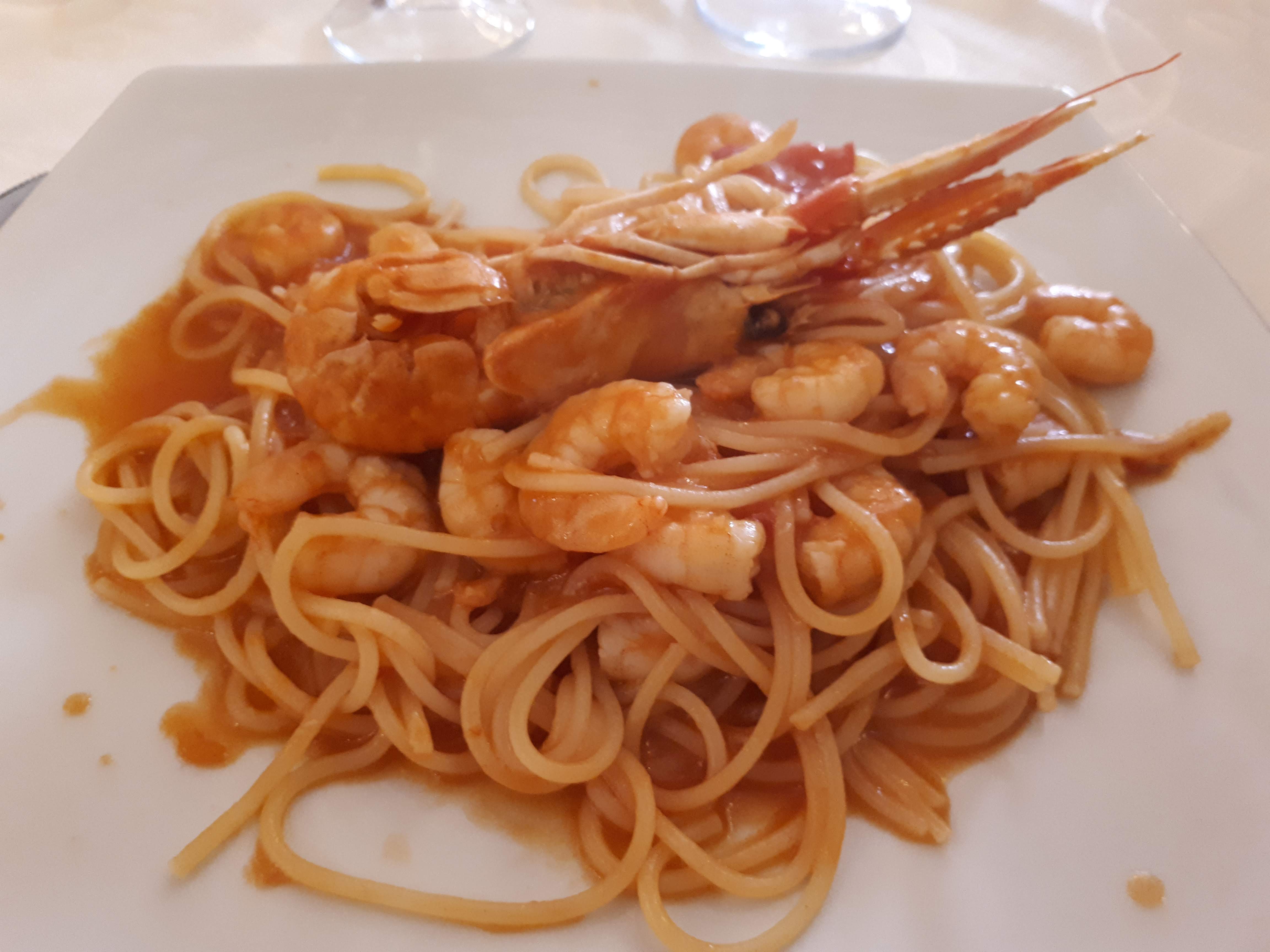 (Pasta and seafood – well it is coastal Italy!)
(Pasta and seafood – well it is coastal Italy!)
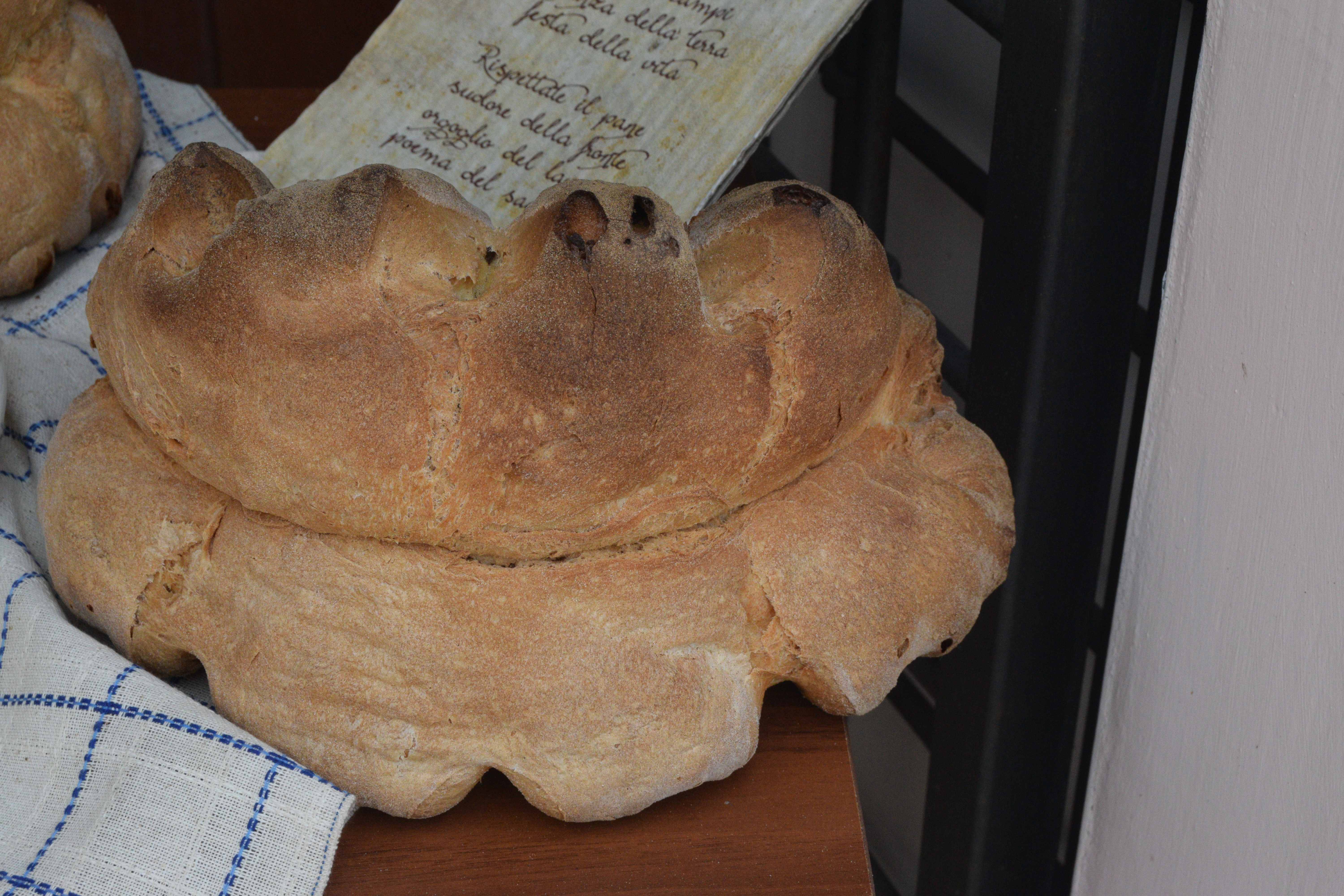 (Pane di Matera)
(Pane di Matera)
 (Antipasto – you have to try the mozzarella)
(Antipasto – you have to try the mozzarella)
(Aperitivo can include olives, bruschetta and other nibbles)
 (You will probably spot Orecchiette being hand shaped outside homes in some of the towns you visit. Traditionally served with turnip greens or broccoli, its a staple on most menus)
(You will probably spot Orecchiette being hand shaped outside homes in some of the towns you visit. Traditionally served with turnip greens or broccoli, its a staple on most menus)
(Plenty of seafood options)
 (Or just stick with a pizza)
(Or just stick with a pizza)
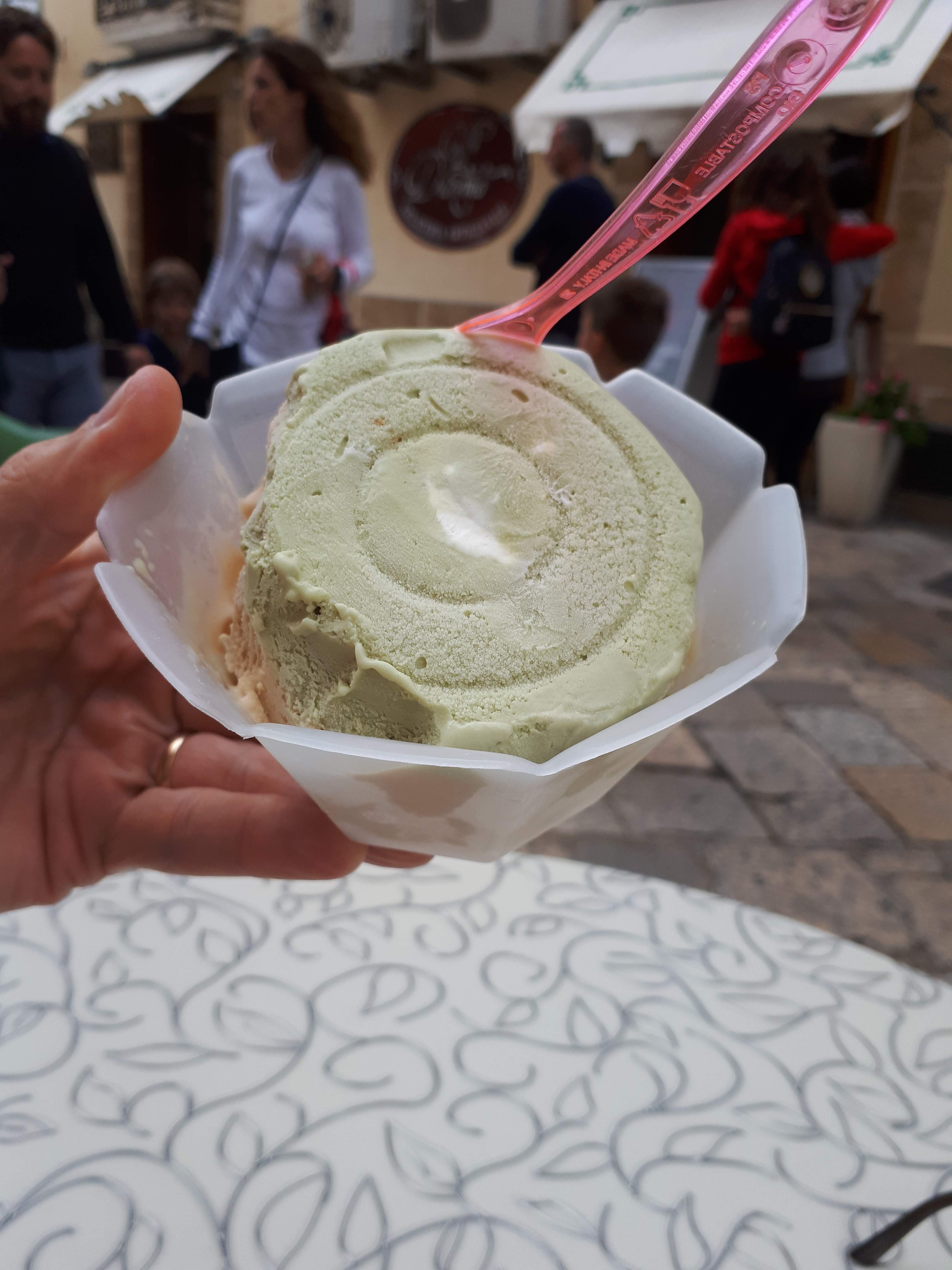 (Spumone from Gallipoli – looks ordinary enough……)
(Spumone from Gallipoli – looks ordinary enough……)
 (….Ah – filled with fruit and nuts – yum!)
(….Ah – filled with fruit and nuts – yum!)
Shopping
You’ll find the usual options – crafts, foodstuffs and souvenirs – in all the major towns. Shopping areas are busy during the day when bus tours are around and again, late in the evening, after dinner. (If, like me, you are travelling with just hand luggage, then unfortunately you can’t avail of the local oils and wines until you get back to the airport.)
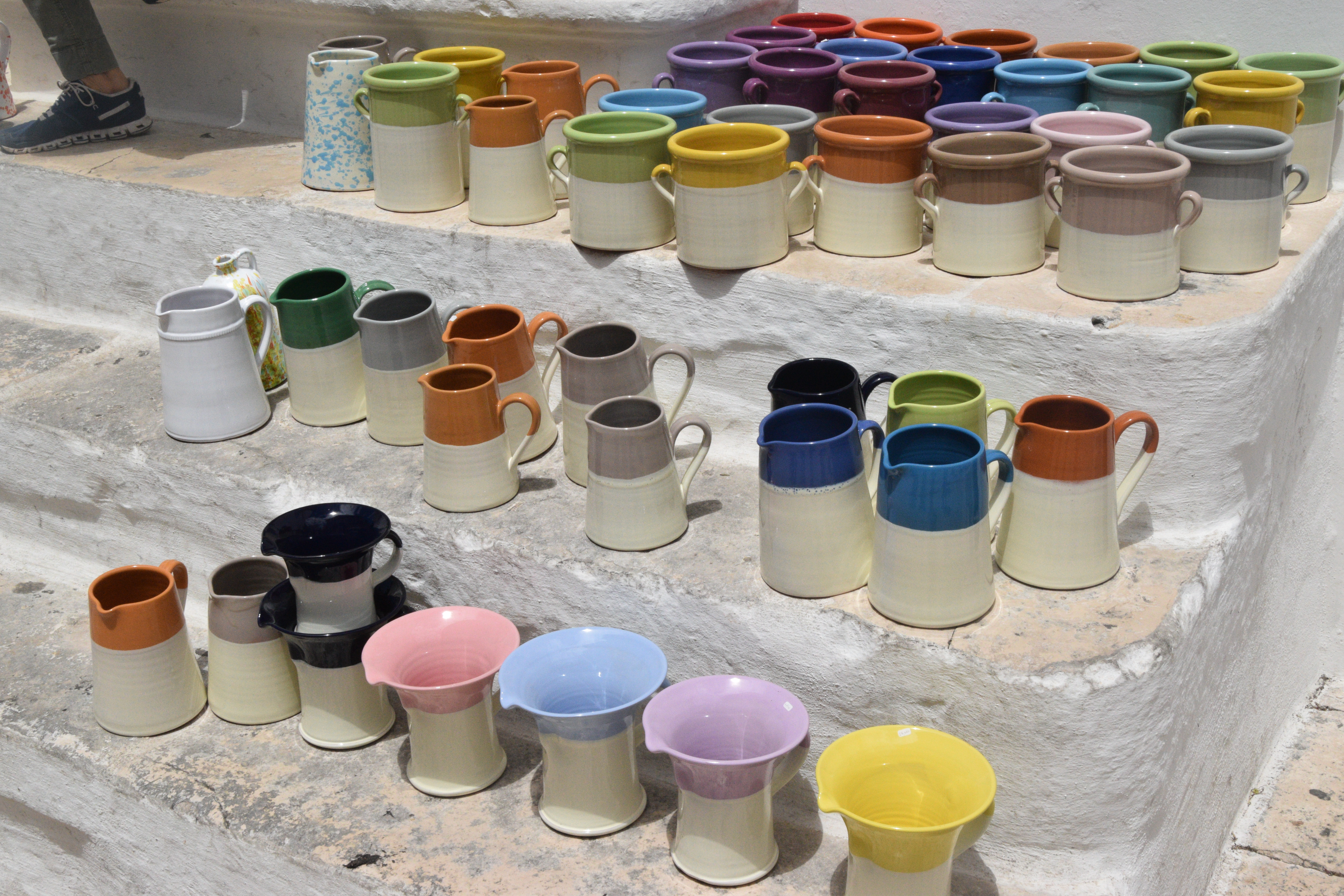 (Ceramics in Locorotondo)
(Ceramics in Locorotondo)
(Lecce is known for its papier-mache art)
(You’ll find plenty of shops selling local produce – olive oil and Taralli [biscuit breads])
(Lots of tourist merchandise)
And finally …..Sunsets
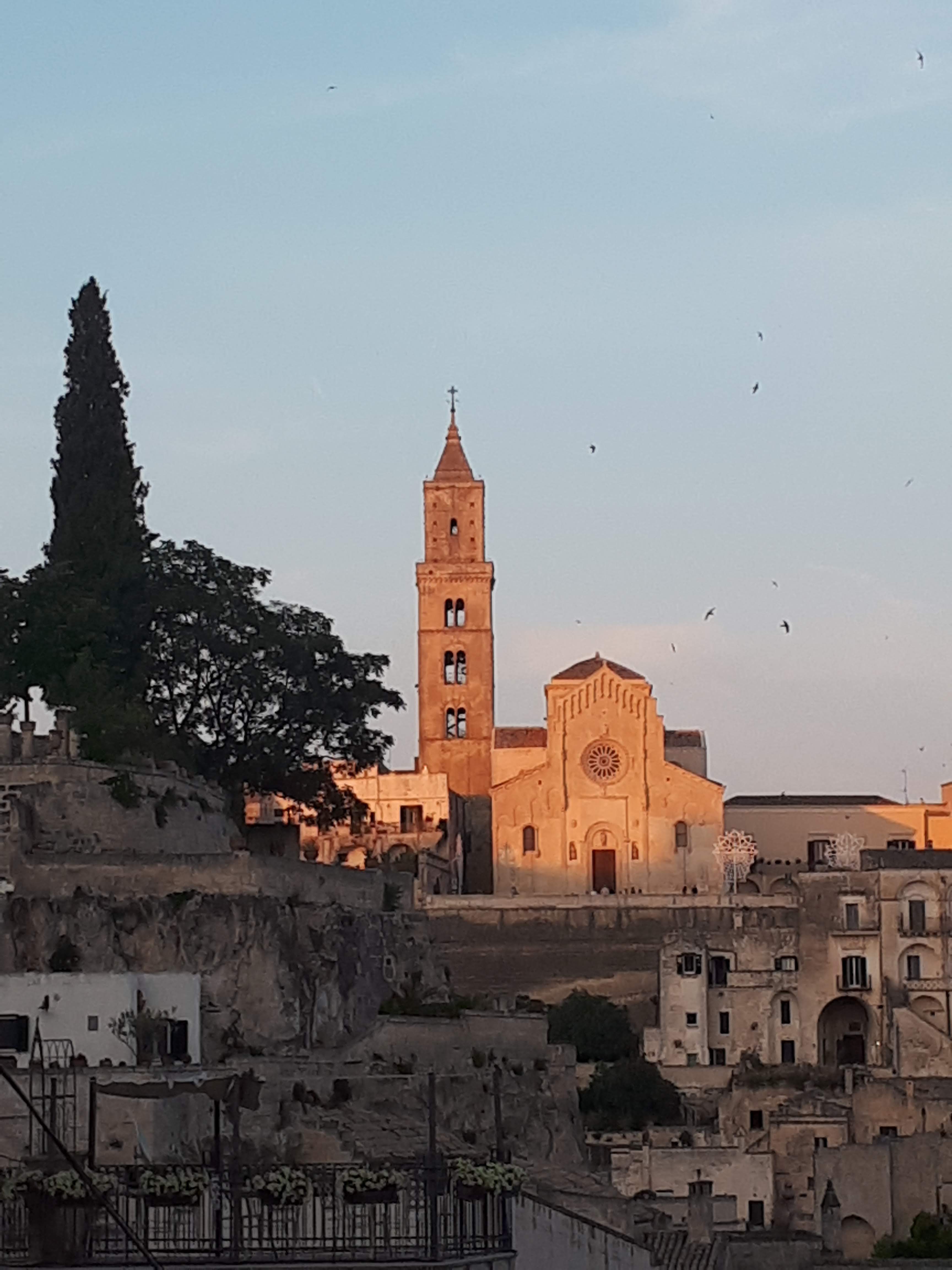 (The last of the evening sun on Duomo di Matera)
(The last of the evening sun on Duomo di Matera)
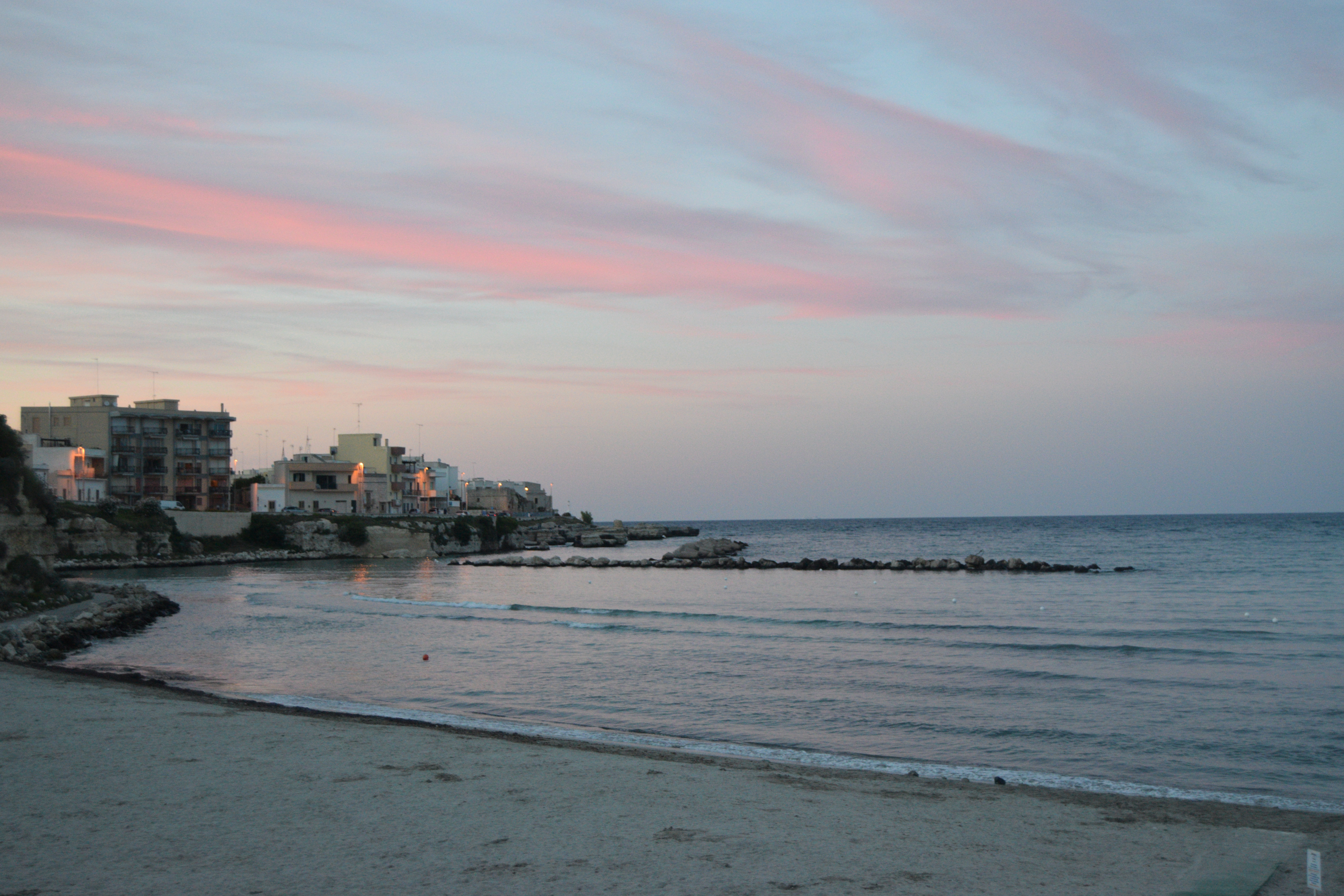
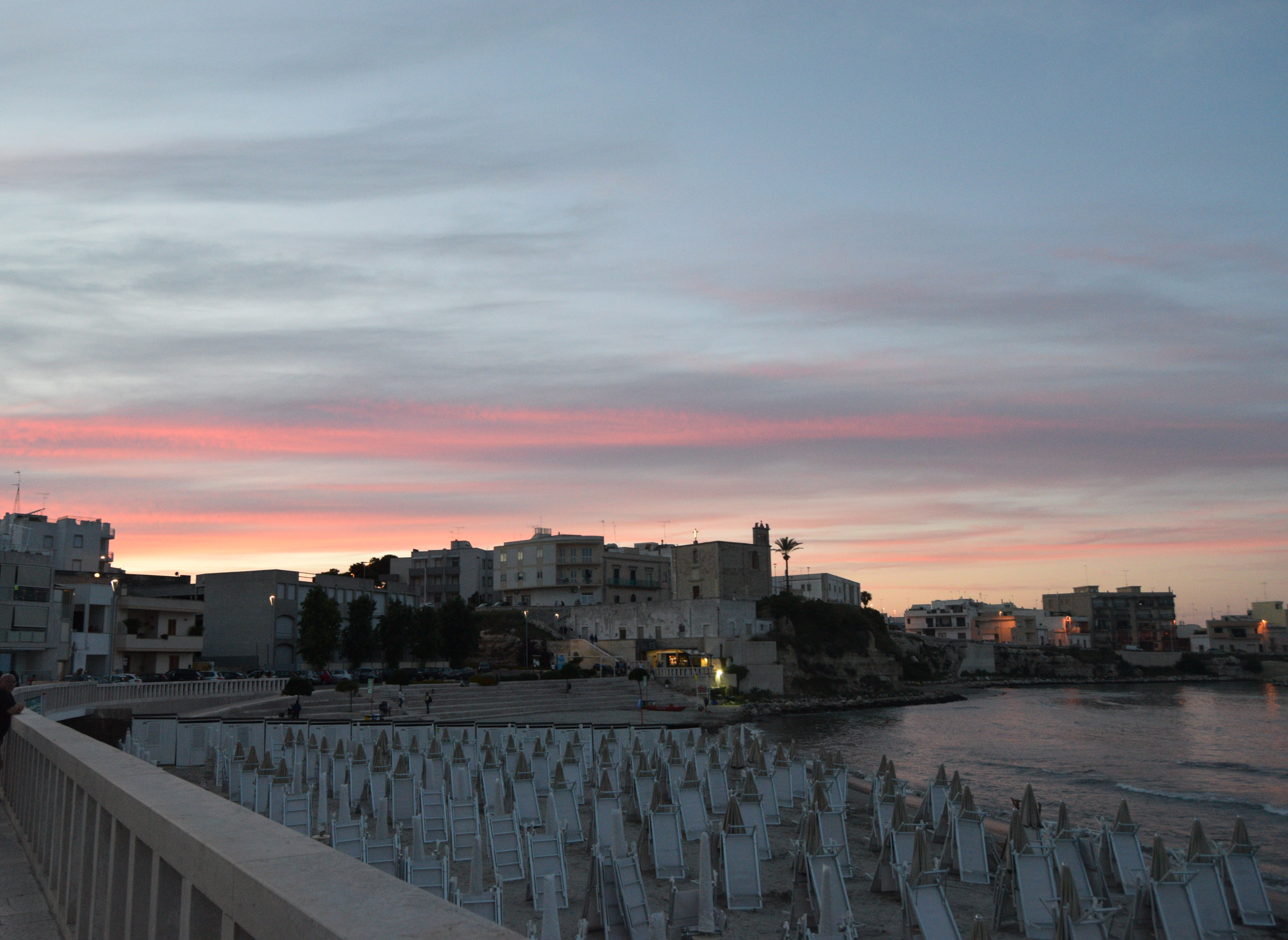


















































Fantastic photos, looks like a great trip
Tom